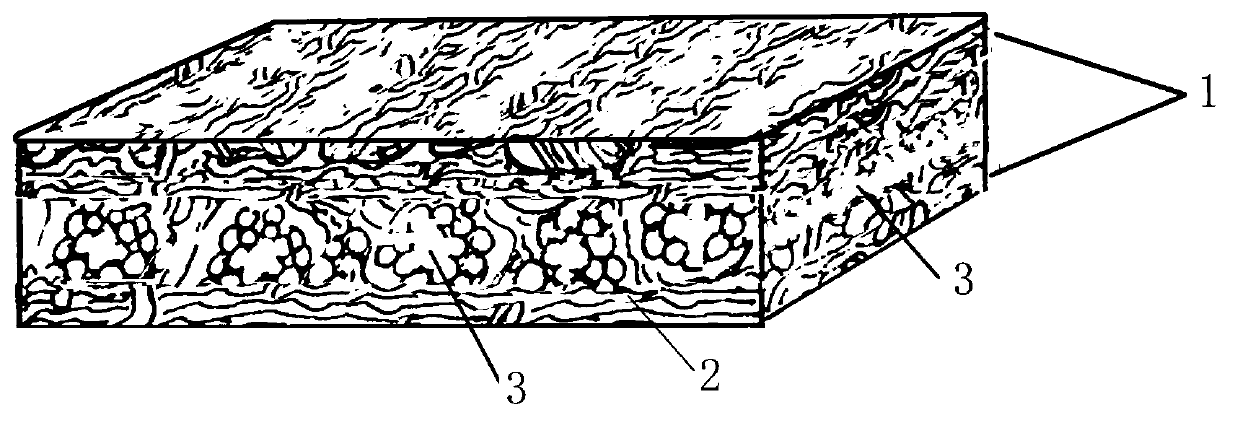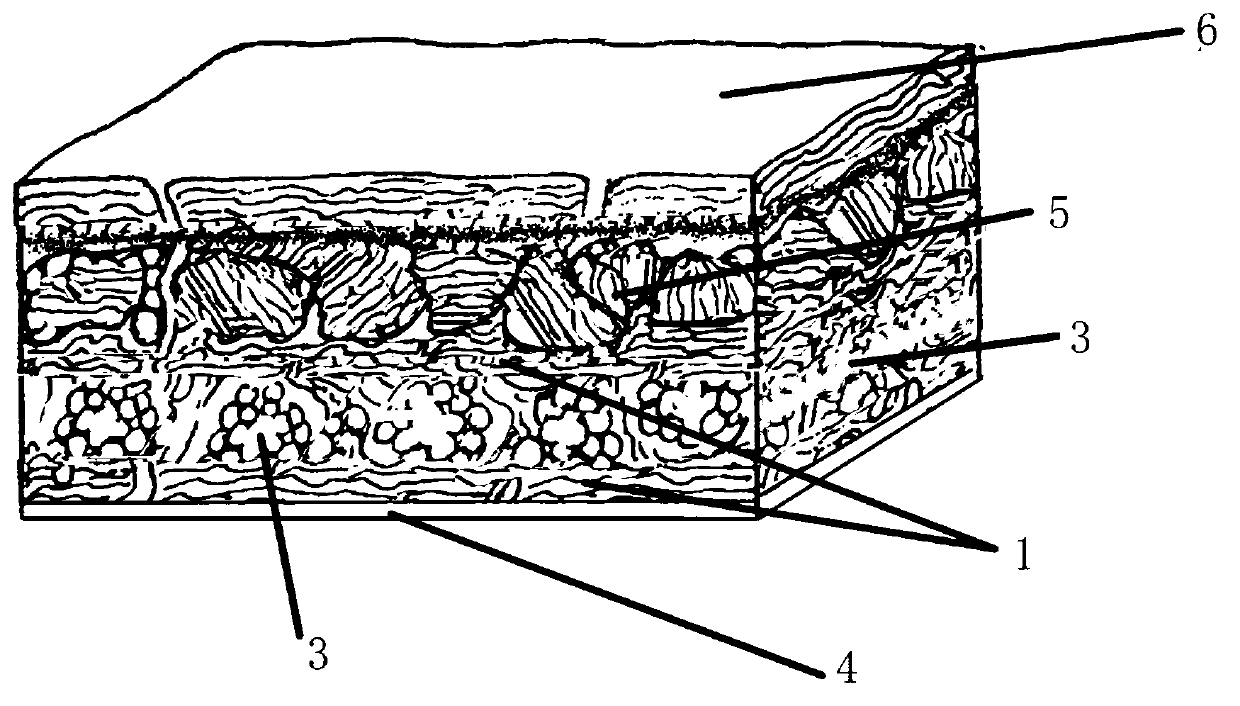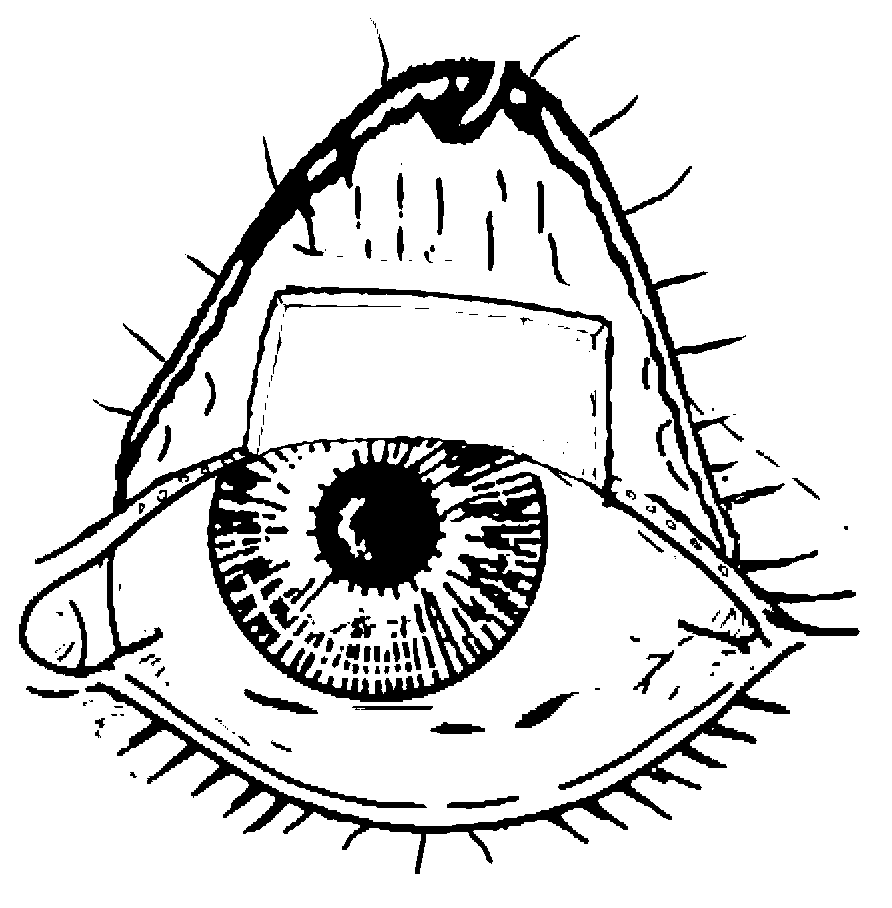Decellularized eyelid board and preparation method thereof
A decellularization and meibomian technology, applied in the field of medical devices, can solve the problems of being unsuitable for eyelid construction, unable to restore the secretion function of meibomian glands, poor histocompatibility and stability, etc., to inhibit the growth of new blood vessels, alleviate the The effect of insufficient donor material and good histocompatibility
- Summary
- Abstract
- Description
- Claims
- Application Information
AI Technical Summary
Problems solved by technology
Method used
Image
Examples
Embodiment 1
[0045] Preparation of decellularized tarsus by chemical osmosis: take the tarsus of rabbits, soak them in an anionic surfactant SDS aqueous solution with a concentration of 0.1% by mass, and treat the tarsus at 37°C for 7 hours to obtain decellularized tarsus . Paraffin sections were made for histopathological observation, the results showed that the cellular components in the matrix were removed, and the tissue observation showed, such as figure 1 As shown, the decellularized tarsus includes tarsus 1 on both sides, several collagen fiber laminae 2 running toward each other between the tarsus, 20-50 meibomian gland ducts 3 between the collagen fiber laminae, and collagen There are also gaps formed after the cells are removed between the fiberboard layers. The basic components of the decellularized meibomian include collagen fibers, meibomian matrix (including mucopolyprotein and glycoprotein, etc.), meibomian gland ducts, and remaining membrane and cytoplasmic components aft...
Embodiment 2
[0052] Chemiosmotic method to make decellularized tarsus: Take the tarsus of pig, which is attached with the skin, muscle and conjunctiva on the eyelid tissue, soak it in the detergent Triton X-100 aqueous solution with a concentration of 1% by mass In this method, the tarsus was treated at 37°C for 24 hours to obtain decellularized tarsus. Paraffin sections were made for histopathological observation, the results showed that the cellular components in the matrix were removed, and the tissue observation showed, such as figure 1 As shown, the decellularized tarsus includes tarsus 1 on both sides, several collagen fiber laminae 2 running toward each other between the tarsus, 20-50 meibomian gland ducts 3 between the collagen fiber laminae, and collagen There are also gaps formed after the cells are removed between the fiberboard layers. The basic components of the decellularized meibomian include collagen fibers, meibomian matrix (including mucopolyprotein and glycoprotein, et...
Embodiment 3
[0057] Preparation of acellular tarsus by chemical osmosis: take the tarsus of a monkey, soak it in an anionic surfactant SDS aqueous solution with a concentration of 0.05% by mass, and treat the tarsus at 45°C for 4 hours to obtain acellular tarsus . Paraffin sections were made for histopathological observation, the results showed that the cellular components in the matrix were removed, and the tissue observation showed, such as figure 1 As shown, the decellularized tarsus includes tarsus 1 on both sides, several collagen fiber laminae 2 running toward each other between the tarsus, and 1 to 50 meibomian gland ducts 3 between the collagen fibrous laminae. There are also gaps formed after the cells are removed between the fiberboard layers. The basic components of the decellularized meibomian include collagen fibers, meibomian matrix (including mucopolyprotein and glycoprotein, etc.), meibomian gland ducts, and remaining membrane and cytoplasmic components after decellulariz...
PUM
| Property | Measurement | Unit |
|---|---|---|
| Osmotic pressure | aaaaa | aaaaa |
| Thickness | aaaaa | aaaaa |
| Diameter | aaaaa | aaaaa |
Abstract
Description
Claims
Application Information
 Login to View More
Login to View More - R&D
- Intellectual Property
- Life Sciences
- Materials
- Tech Scout
- Unparalleled Data Quality
- Higher Quality Content
- 60% Fewer Hallucinations
Browse by: Latest US Patents, China's latest patents, Technical Efficacy Thesaurus, Application Domain, Technology Topic, Popular Technical Reports.
© 2025 PatSnap. All rights reserved.Legal|Privacy policy|Modern Slavery Act Transparency Statement|Sitemap|About US| Contact US: help@patsnap.com



